UC Blogs
A Pomegranate Kind of Day
It was a pomegranate kind of day. Red, bright and wonderful.The papery-thin reddish blossoms in our yard draw both beneficial and pestiferous...
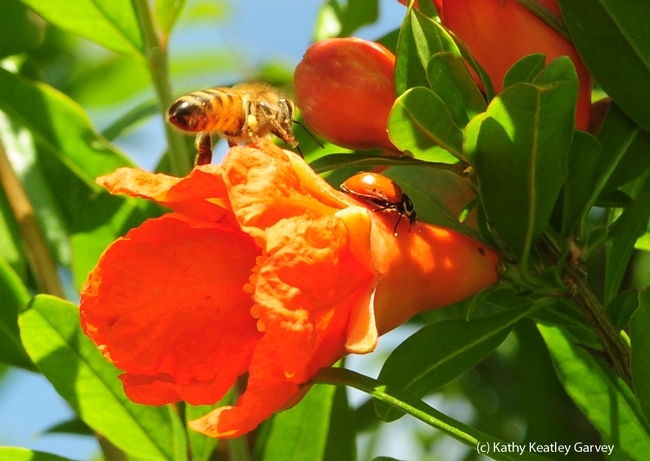
Honey bee nearly collides with a ladybug, aka ladybeetle. (Photo by Kathy Keatley Garvey)
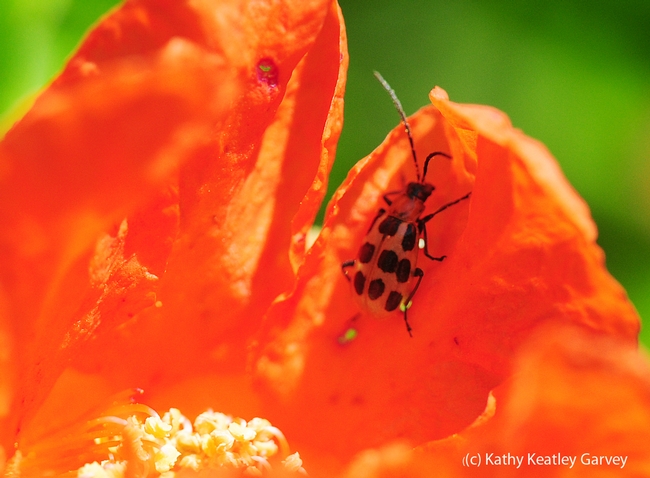
A pest, a spotted cucumber beetle. (Photo by Kathy Keatley Garvey)
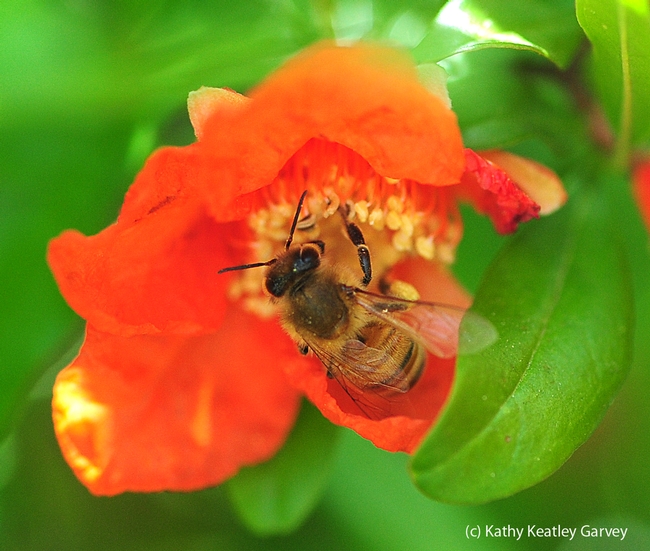
Honey bee foraging in pomegranate blossom. (Photo by Kathy Keatley Garvey)
Turfgrass Help
I am a turf gardener so I get a sense of satisfaction when my grass is full, dark green and lush on hot summer days. It takes proper year round care to make it through an entire Northern California summer unscathed by the changing conditions. The summer season introduces heat, wind, pests, and uneven watering patterns that turf gardeners in our region need to prepare for to ensure summer success. I want to provide a few tips on how to better prepare your turf for this season. It is important to mow turf regularly and to mow at the correct length for the conditions. It is critical to cut the lawn at a longer, higher length during the summer than you might the rest of the year. Turf that is cut at a longer length protects the roots from the midday heat and maintains moisture by slowing evaporation. Longer blades of grass also help prevent wind from drying out the topsoil. An important decision for turf a gardener is how often to water the grass when it is hot outside. Research shows that it is most effective to water deeply only a couple times a week rather than watering shallow and more frequently. An irrigation survey can be helpful in determining your ideal watering needs but a good rule of thumb if you don’t have time for a survey is to water at least twice a week until the soil is thoroughly saturated. In other words, a good deep drenching twice a week is better than 10 minutes every day. A quarterly fertilizer regiment should be implemented before the summer is in full swing to keep the roots well fed. Fertilizers should not be applied during warm summer days. Other treatments that you might consider are dethatching and aerating your turf to improve air flow to the roots and prevent disease. The most important tip to take from this blog is to raise the blade on your mower now through October to increase the length of the cut during the summer months. That tip alone should keep your turf healthier than it normally would if you were mowing at lower golf course levels. I attached a couple photos of grass being cut too short and not being watered deeply enough for reference.

Examples of unhealthy turf. (photos by Ed Walbolt)
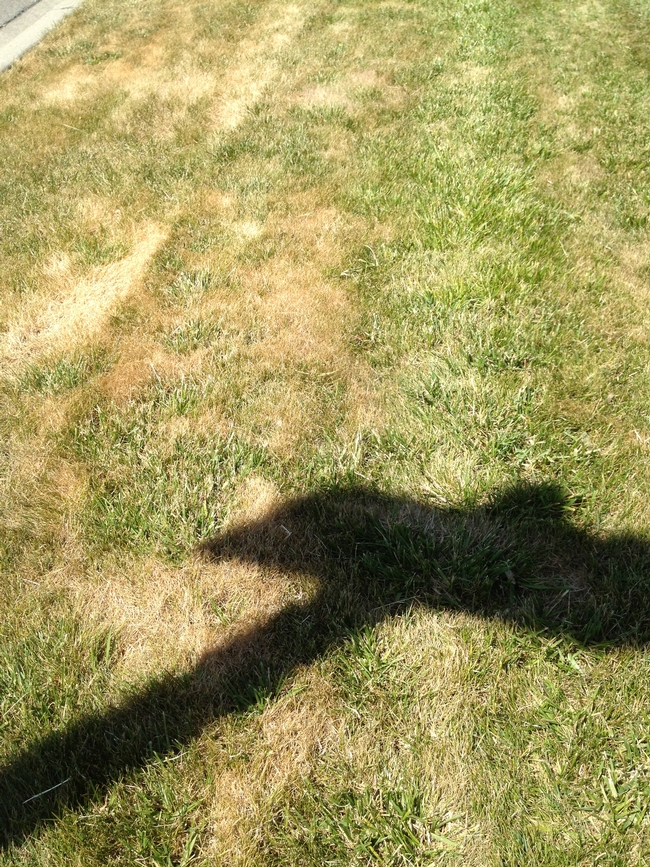
dry turff
Shirley Luckhart: Outstanding Mentor
The honor is so well deserved. UC Davis molecular biologist Shirley Luckhart, professor of Medical Microbiology and Immunology (MMI) and a...
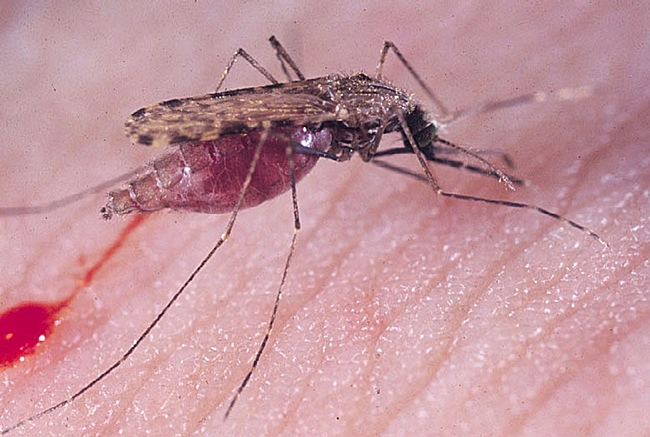
Anopheles gambiae, also known as the malaria mosquito. (Photo by medical entomologist Anthony Cornel, UC Davis associate professor)
Pricking Out Plants
This weekend, I attended the 7th of an 8-class series on Biodynamic Gardening/Farming at a local college. The topic for this month’s class was on “Growing Plants and Weed Management.” With regard to the “growing plants” segment of the class, the instructor (who also farms the land at the college), introduced me to the concept of “pricking out,” which means transferring a newly germinated seedling at the proper time to a larger container (note that "pricking out" is a form of transplanting and is not synonymous with "thinning out"). According to the instructor, “pricking out” is necessary when a plant is grown in tight quarters, say in a tray or pot (see photos), with many other seedlings. Timing to “prick out” is critical. “Pricking out” should only be done after the seed leaves and first set of true leaves have emerged and are fully formed. At that stage, the gardener grasps the seedling gently from its base, leaving as much of the potting mix/compost attached to the root system. If the true leaves have become too large because the gardener did not “prick out” timely, the gardener will trim the tops of the plant slightly as well as the roots, prior to transplanting the seedling into a larger pot/container (the instructor explained that trimming the tops of the plants reduces the stress on the plant’s root system because there would be less for the root system to support). It should be noted that the seedlings should be watered both before and after the transplant.
I have yet to try this out on my own seedlings, but if the plants on the farm at the college are any indication (they appear to be healthy and strong), this method may well be worth the experimentation.
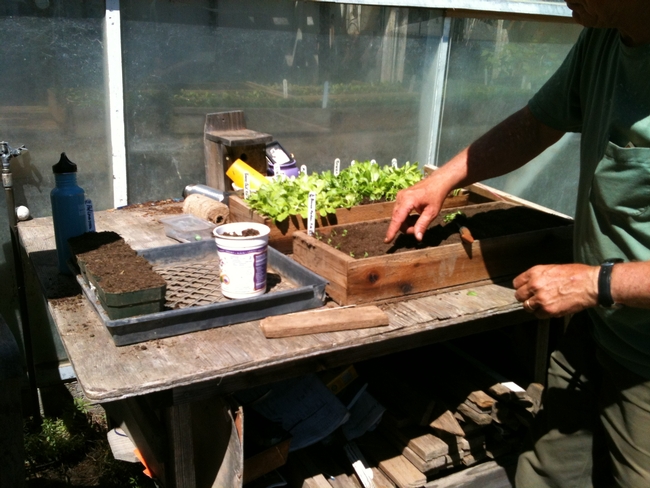
Seedlings in tray. (photos by Betty Homer)

Pricked out plant.
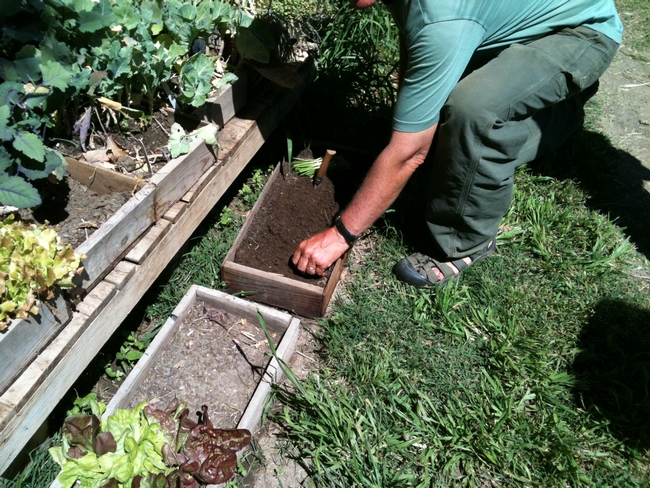
Transplanting plant into another tray.
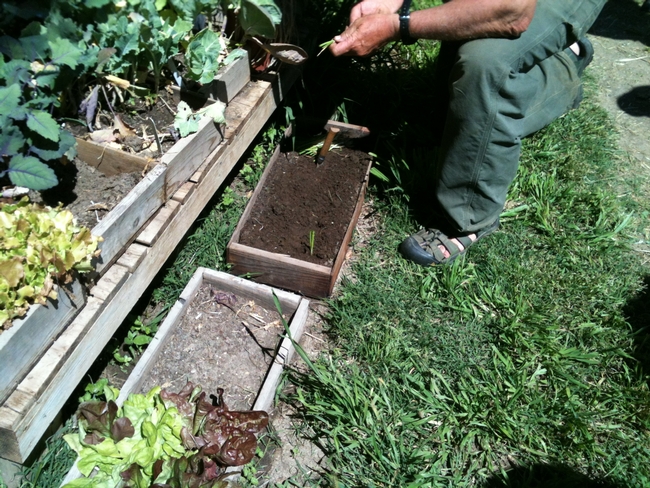
Freshly transplanted plant.
Sounding the Trumpet (Vine)
If you're looking for a good bee plant that offers a little bit of an obstacle, try the violet trumpet vine (Clytostoma calystegioides). It's one of...

Honey bee slides into a a violet trumpet vine blossom. (Photo by Kathy Keatley Garvey)

Honey bee leaves a violet trumpet vine blossom. (Photo by Kathy Keatley Garvey)

